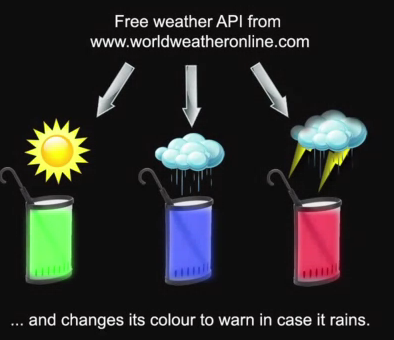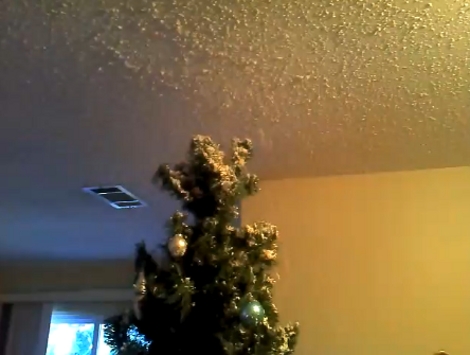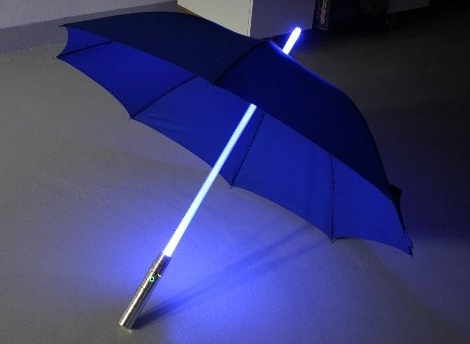
This project takes an umbrella stand and gives it the ability to let you know if you need to take an umbrella when you leave the house. The image above is a concept drawing, but a first prototype was built and seems to work quite well. See for yourself in the video after the break.
The project was put together by openPicus. They sell a prototyping module called the Flyport which provides a WiFi connection to your projects. This board connects to a set of LEDs which are used to illuminate the translucent plastic umbrella stand. But you might not notice the color change if the LEDs were always on. Also designed into the system is a PIR motion sensor. When you walk toward the door to leave for the day it switches on the appropriate color — green for clear, blue for raining, and red for storming — catching your attention in time to grab an umbrella as you pass by.
You don’t need to spend a bundle to pull off a hack like this. You can scavenge for a PIR sensor, use one color of LEDs just to tell you when rain or storms are forecast, and an ENC28J60 is a cheap and easy Ethernet alternative to using WiFi.
Continue reading “An Umbrella Stand That Tells You The Weather Forecast”
















